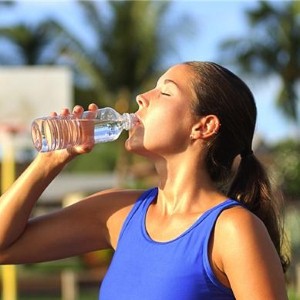Extreme heat can force the body into overdrive as it tries to stay cool through perspiration and evaporation. Heat kills by pushing the human body beyond its limits. In extreme heat and high humidity, evaporation slows, and the body must work extra hard to maintain a normal temperature. During heat waves, which are extended periods of extreme heat often accompanied by high humidity, conditions can be dangerous and even life-threatening for people who don’t take the proper precautions
Most heat disorders occur because the victim has been overexposed to heat or has over-exercised for his or her age and physical condition. Older adults, young children and those who are sick or overweight are more likely to succumb to extreme heat. Conditions that can induce heat-related illnesses include stagnant atmospheric conditions and poor air quality.
The Met Office provides up-to-date weather advisories and warns the public of severe or hazardous weather through its National Severe Weather Warning Service. Warnings are given a colour (Green, Yellow, Amber or Red) based on the combination of both the likelihood of the severe weather event occurring and the impact the weather conditions may have. Make sure you check your local weather forecast to find out whether the Met Office has released any warnings for your area.
Very Low Threat (Green) – The weather is not expected to have any noticeable impacts, but there may be some minor issues; for example, some extra care may be needed when travelling and there may be some disruption to outdoor events.
Low Threat (Yellow) – Access the latest weather forecast for up-to-date weather information. Expect some minor delays due to slower traffic. Outdoor events may be disrupted or cancelled.
Medium Threat (Amber) – Take precautions where possible and ensure you access the latest weather forecast. Be prepared for some disruption to normal daily routines. Travel only if well-prepared, and expect longer journey times.
High Threat (Red) – Take precautionary action and remain extra vigilant. Follow orders and any advice given by authorities under all circumstances. Access the latest weather forecast. Expect significant disruption to normal daily routines. Avoid all non-essential journeys. If you must make a journey, carry emergency food, clothing, blankets, etc.
During Extreme Heat
What you should do if the weather is extremely hot:
- Stay indoors as much as possible and limit exposure to the sun.
- Seek shade from trees, umbrellas and canopies to reduce exposure to UV radiation, especially between 11am and 3pm, when the sun is strongest.
- Stay on the lowest floor out of the sunshine if air conditioning is not available.
- Postpone outdoor games and activities.
- Consider spending the warmest part of the day in public buildings that have air conditioning, such as libraries, schools, cinemas, shopping centres and other community facilities. Circulating air can cool the body by increasing the evaporation rate of perspiration.
- Eat well-balanced, light and regular meals.
- Drink plenty of water, even if you do not feel thirsty. Avoid drinks with caffeine. People who have epilepsy or heart, kidney or liver disease, who are on fluid-restricted diets or who have a problem with fluid retention should consult a doctor before increasing liquid intake.
- Limit intake of alcoholic beverages.
- Dress in loose-fitting, lightweight and light-coloured clothes that cover as much skin as possible. Avoid dark colours, because they absorb the sun’s rays.
- When outdoors, protect your face and head by wearing a wide-brimmed hat.
- Use sunscreen. It is recommended to apply sunscreen of SPF 15+ liberally, reapplying every two hours, or after swimming or exercising outdoors.
- Avoid strenuous work during the warmest part of the day. Use a buddy system when working in extreme heat, and take frequent breaks.
- Avoid extreme temperature changes.
Stay safe when severe weather strikes by being prepared and checking weather forecasts and warnings

